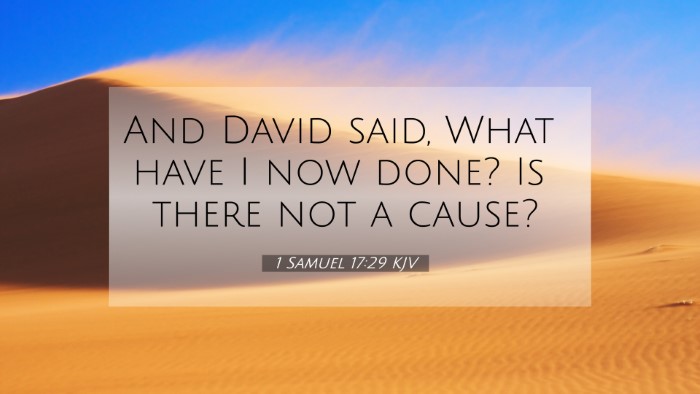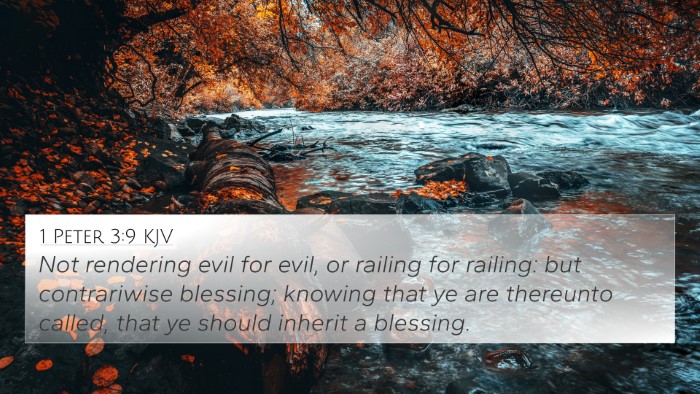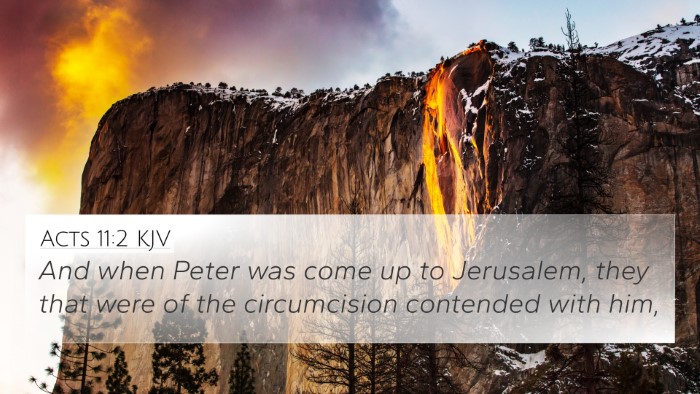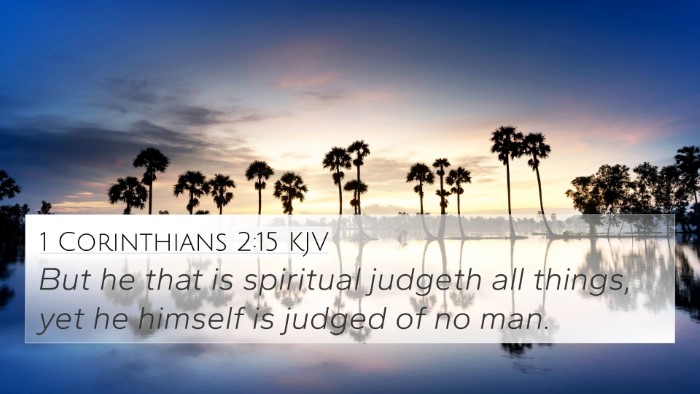Understanding 1 Samuel 17:29
The verse 1 Samuel 17:29 states: “And David said, What have I now done? Is there not a cause?” This verse captures a pivotal moment in the life of David before his battle with Goliath, highlighting themes of purpose, courage, and the call to action in the face of adversity.
Insights from Public Domain Commentaries
In analyzing this verse, we can draw upon insights from renowned biblical commentators including Matthew Henry, Albert Barnes, and Adam Clarke.
Matthew Henry's Commentary
Matthew Henry emphasizes the importance of motives behind actions. David is portrayed as a young man who is moved by a righteous cause—to defend the name of the Lord against the blasphemies of Goliath. His question reflects not only his innocence in misunderstanding the accusations he faced from his brother Eliab but also reveals his underlying conviction that there is a greater purpose behind his actions. Henry notes that David's purpose is God’s glory, setting a powerful precedent for believers to align their actions with divine intention.
Albert Barnes' Notes
Albert Barnes focuses on the context of the verse, explaining how David was confronted with resentment from his brother as he expressed the desire to fight Goliath. Barnes suggests that David’s response indicates his steadfastness and the clarity of his sense of duty. He points out that David’s courageous heart and faith lead him to ask the rhetorical question that unveils his understanding of the urgency of the situation—the need to defend Israel and God's honor. Barnes encourages readers to reflect on their own motives when faced with adversity, advocating for clarity of purpose.
Adam Clarke's Commentary
Adam Clarke elaborates on the emotional dynamics at play within the narrative. He interprets David's words as a blend of innocence and indignation. David’s questioning showcases his bewilderment at being chastised for wanting to fight when such a significant affront was being presented before his people. Clarke emphasizes that David's sense of “cause” indicates a deeper understanding of duty to God’s people. Clarke also invites readers to apply this scenario to their own lives, encouraging them to recognize when they are called to stand for righteousness in challenging situations.
Cross-Referencing Related Bible Verses
1 Samuel 17:29 presents various thematic connections within Scripture that enhance understanding through comparative Bible verse analysis. Here are some cross-references that relate closely to this verse:
- Exodus 14:14 - “The Lord will fight for you, and you shall hold your peace.” This verse echoes David’s trust in God’s deliverance in confrontation.
- Psalm 43:1 - “Vindicate me, O God, and defend my cause against an ungodly people.” Similar themes of divine justice and standing for truth emerge in David's plight.
- 1 Samuel 16:7 - "But the Lord said to Samuel, 'Do not look on his appearance or on the height of his stature, because I have rejected him.'" This verse speaks to God’s choosing of David based on his heart rather than outward appearances.
- 1 Peter 3:14 - "But even if you should suffer for righteousness’ sake, you will be blessed." Parallels the noble cause for which David stands.
- Romans 12:19 - “Beloved, do not avenge yourselves, but rather give place to wrath; for it is written, ‘Vengeance is Mine, I will repay,’ says the Lord.” Reflects the theme of divine justice that David exemplifies in his approach.
- Matthew 10:28 - “And do not fear those who kill the body but cannot kill the soul.” Encourages a spirit of courage similar to David's before his enemy.
- 2 Corinthians 10:4 - “For the weapons of our warfare are not carnal, but mighty in God for pulling down strongholds.” Aligns with David's reliance on God rather than physical weapons.
- Philippians 1:27 - “Only let your conduct be worthy of the gospel of Christ.” Calls for believers to stand firm for their cause, similar to David’s stand against Goliath.
- Isaiah 54:17 - “No weapon formed against you shall prosper.” Echoes the divine protection and affirmation of David's faith.
- Luke 1:37 - “For with God nothing will be impossible.” A reminder of God’s omnipotence which David fully understood and relied upon in his battle.
Thematic Connections and Conclusion
1 Samuel 17:29 serves as a powerful declaration of purpose in faith and the importance of recognizing a "cause." David’s response is a clarion call for all believers to evaluate their motivations and actions when faced with opposition. As seen through various cross-references, the themes of divine justice, courage in the face of giants, and unwavering faith resonate throughout the Scriptures.
Tools for Bible Cross-Referencing
Utilizing tools for Bible cross-referencing allows for a richer understanding of how various scriptures connect. Guidelines for using these resources include:
- Utilizing a Bible concordance to find pertinent verses related to specific themes.
- Engaging with a Bible cross-reference guide to explore both Old and New Testament connections.
- Practicing cross-reference Bible study methods to deepen theological understanding.
- Employing Bible reference resources for sermon preparation and teaching.
- Exploring comprehensive Bible cross-reference materials for detailed analysis of biblical texts.
Final Thoughts
The story of David against Goliath in 1 Samuel 17 ultimately illustrates the courage that arises from a profound sense of purpose in God's plan. This connection across scripture underscores the significance of faith and determination amid trials, inspiring believers to recognize their own causes today.






